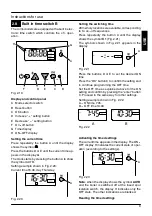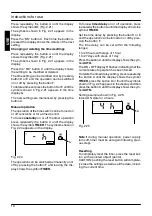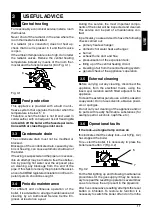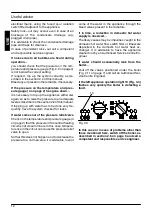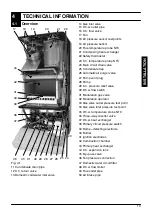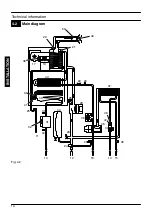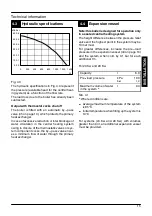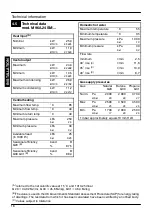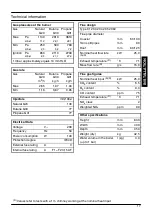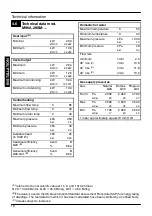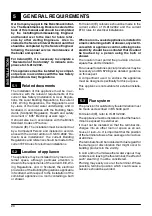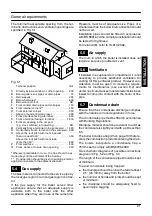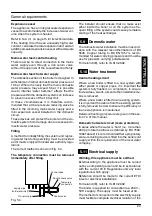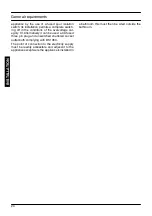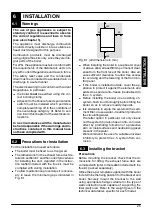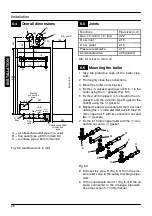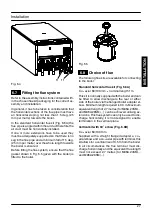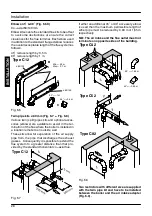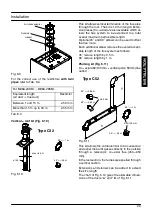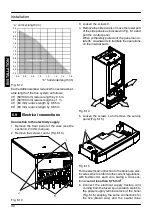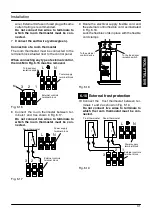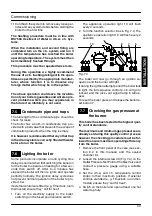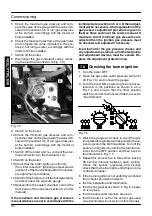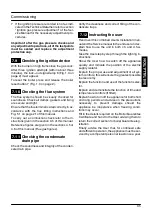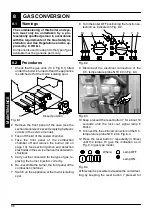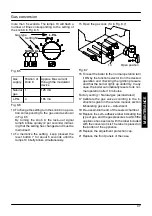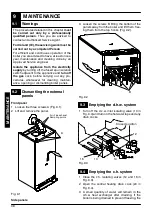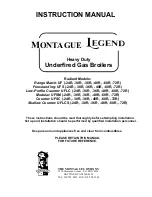
General requirements
rev 17 09 93
23
Expansion vessel
The appliance has an integral sealed expansion
vessel to accommodate the increase of water vol-
ume when the system is heated.
Refer to Tab. 4.1 on page 15 for its technical data.
If the heating circuit has an unusually high water
content, calculate the total expansion and add an
additional sealed expansion vessel with adequate
capacity.
Mains water feed: central heating
There must be no direct connection to the mains
water supply even through a non return valve,
without the approval of the Local Water Authority.
Mains water feed: hot water supply
The domestic section of the boiler is designed to
withstand an internal domestic water pressure of
10 bar. Where it is likely that the mains domestic
water pressure may exceed 5 bar, it is possible
due to internal “water hammer” effects that the
pressure within the domestic system can increase
to a level in excess of the 10 bar limit.
In these circumstances it is therefore recom-
mended that a 3 bar pressure reducing valve be
fitted to the incoming mains water supply and a
mini expansion vessel installed on the domestic
circuit.
These devices will protect the boiler and the do-
mestic system from damage due to excessive do-
mestic water pressure.
Filling
A method for initially filling the system and replac-
ing water lost during servicing must be provided
and it must comply with local water authority regu-
lations.
The correct method is shown in Fig. 5.4.
The temporary connection must be removed
immediately after filling.
Temporary
connection
Control valve
Control valve
Double check valve
Supply pipe
(cold water inlet)
C.h. return pipe
Fig. 5.4
The installer should ensure that no leaks exist
either inside the boiler or on the system as fre-
quent filling of the system could cause premature
scaling of the heat exchanger.
5.9
Domestic water
The domestic water installation must be in accord-
ance with the relevant recommendations of BS
5546. Copper tubing to BS EN 1057 is recom-
mended for water carrying pipework and must be
use for pipework carrying potable water.
For Ireland (IE), refer to I.S.813.2002.
5.10
Water treatment
Central heating circuit
Where a new boiler is fitted to a new system with
either plastic or copper pipes, it is important the
system is fully flushed, on completion, to ensure
flux residues, swarfs, oils and other installation de-
bris is removed.
Where a new boiler is fitted to an existing system,
it is important the debris from the existing system
is fully removed in order to ensure the efficiency of
the new appliance is maintained.
Details on flushing procedure are given in the sec-
tion 7.4 of this manual.
Domestic hot water circuit (scale protection)
In areas where the water is ’hard’ (i.e. more than
200 ppm total hardness as defined by BS 7593:
1993 Table 2) it is recommended that a proprietary
scale---reducing device is fitted into the boiler cold
supply, within the requirements of the local water
company.
5.11
Electrical supply
Warning, this appliance must be earthed.
External wiring to the appliance must be carried
out by a competent person and be in accordance
with the current I.E.E. Regulations and any local
regulations which apply.
Reference should be made to the current ETCI
rules for electrical installations.
For Ireland (IE), refer to I.S.813.2002.
The boiler is supplied for connection to a 230 V~
50 Hz supply. The supply must be fused at 3A.
The method of connection to the electricity supply
must facilitate complete electrical isolation of the
IN
S
TA
LLA
TI
O
N

